Description
The Future Circular Collider (FCC) 'integrated programme' consists of an initial electron-positron collider FCC-ee, which is later followed by a proton-proton collider, FCC-hh. This comprehensive programme is well matched to the current scientific landscape after 15 years of LHC operation. The proposed staging takes into account: (1) the physics priorities as developed and stated by EPPSU 2013 and 2020; and (2) the relative technology readiness and costs of FCC-ee and FCC-hh.
Both FCC-ee and FCC-hh are installed in the same 91 km circumference tunnel close to CERN, which allows reuse of all FCC-ee civil engineering and much of the technical infrastructure for the subsequent FCC-hh, thus maximising the return on investment and ensuring sustainable long-term use of the infrastructure. Taking advantage of a perfect four-fold superperiodicity, FCC-ee and FCC-hh each accommodate four experimental detectors. The two FCC stages, FCC-ee and FCC-hh, are optimised so as to enable the widest possible physics programme, with ample complementarity and synergies between Stage 1 and Stage 2.
The hadron collider, FCC-hh, operates at a centre-of-mass energy of about 85 TeV, extending the energy frontier by almost an order of magnitude compared with the LHC, and providing integrated luminosity 5–10 times higher than that of the upcoming High-Luminosity LHC. The mass reach for direct discovery at FCC-hh amounts to several tens of TeV and allows, for example, the direct production of new particles, whose existence could already be indirectly exposed by precision measurements at FCC-ee. The FCC-hh hadron collider can also accommodate ion-ion, ion-hadron, and lepton-hadron collision options, allowing for complementary physics explorations.
A project implementation scenario has been developed, and an analysis of the current environmental status has not revealed any showstoppers. Dialogue with the public has begun. The project implementation scenario, the analysis of the environment, and engagement with the public, representing about seven years of past activities, are necessary prerequisites for the authorisation processes with the host states and facilitate convergence towards a credible implementation schedule and planning security. For the FCC-ee, a wider socio-economic impact assessment has revealed a positive net present value under conservative assumptions and implementation conditions. An equivalent assessment remains to be done for FCC-hh.
The three volumes of the FCC Feasibility Study Report are available for download.
